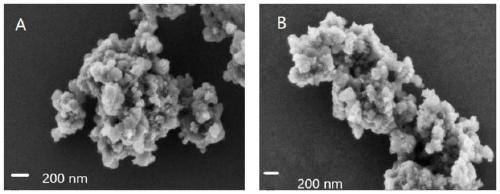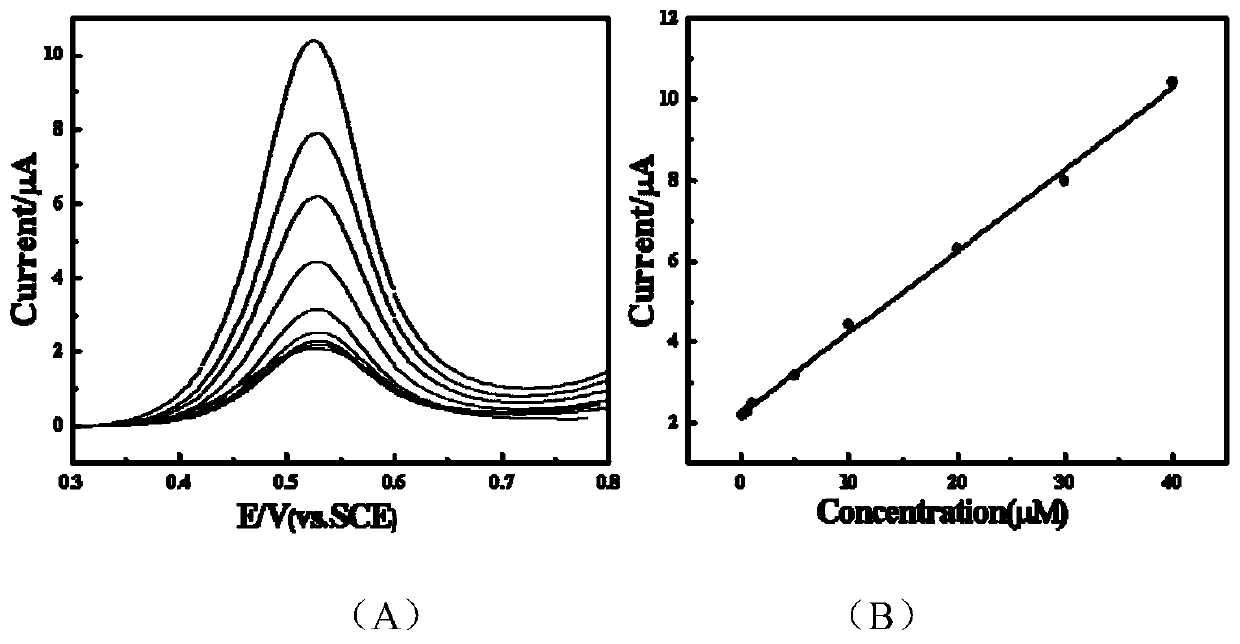Method for detecting octylphenol in textile based on molecular imprinting technology
A molecular imprinting technology and molecular imprinting technology, applied in the field of analysis and detection, can solve the problems of high instrument cost, long detection time, complicated operation process, etc., and achieve the effect of strong specificity and low detection cost.
- Summary
- Abstract
- Description
- Claims
- Application Information
AI Technical Summary
Problems solved by technology
Method used
Image
Examples
Embodiment 1
[0030] Test Instruments and Consumables
[0031] Electrochemical experiments were carried out on an electrochemical workstation CHI-660E (Shanghai Chenhua Instrument Co., Ltd.), screen-printed electrodes (Nanjing Zhongke Electrode Co., Ltd.), conductive carbon paste working electrodes, and silver / silver chloride reference electrodes.
[0032] Octylphenol-polyaniline titanium dioxide mixture
[0033] Add 1.5 mmol of aniline and 0.5 mmol of octylphenol into 5 mL of isopropanol and stir for 1 hour to form a mixed solution of aniline-octylphenol.
[0034] 0.15g titanium dioxide nanoparticles, 3ml isopropanol, 0.8molHCL, 0.7mmol FeCl 3 ·6H 2 O and 27ml of secondary water were mixed, and stirred continuously at 0°C for 30min to form a titanium dioxide particle dispersion.
[0035] After mixing 5ml of aniline-octylphenol mixed solution and 30mL of titanium dioxide particle dispersion, blow nitrogen gas, deoxygenate, stir for 24 hours, then use acetone as precipitant, repeatedly pr...
PUM
| Property | Measurement | Unit |
|---|---|---|
| pore size | aaaaa | aaaaa |
Abstract
Description
Claims
Application Information
 Login to View More
Login to View More - R&D
- Intellectual Property
- Life Sciences
- Materials
- Tech Scout
- Unparalleled Data Quality
- Higher Quality Content
- 60% Fewer Hallucinations
Browse by: Latest US Patents, China's latest patents, Technical Efficacy Thesaurus, Application Domain, Technology Topic, Popular Technical Reports.
© 2025 PatSnap. All rights reserved.Legal|Privacy policy|Modern Slavery Act Transparency Statement|Sitemap|About US| Contact US: help@patsnap.com



